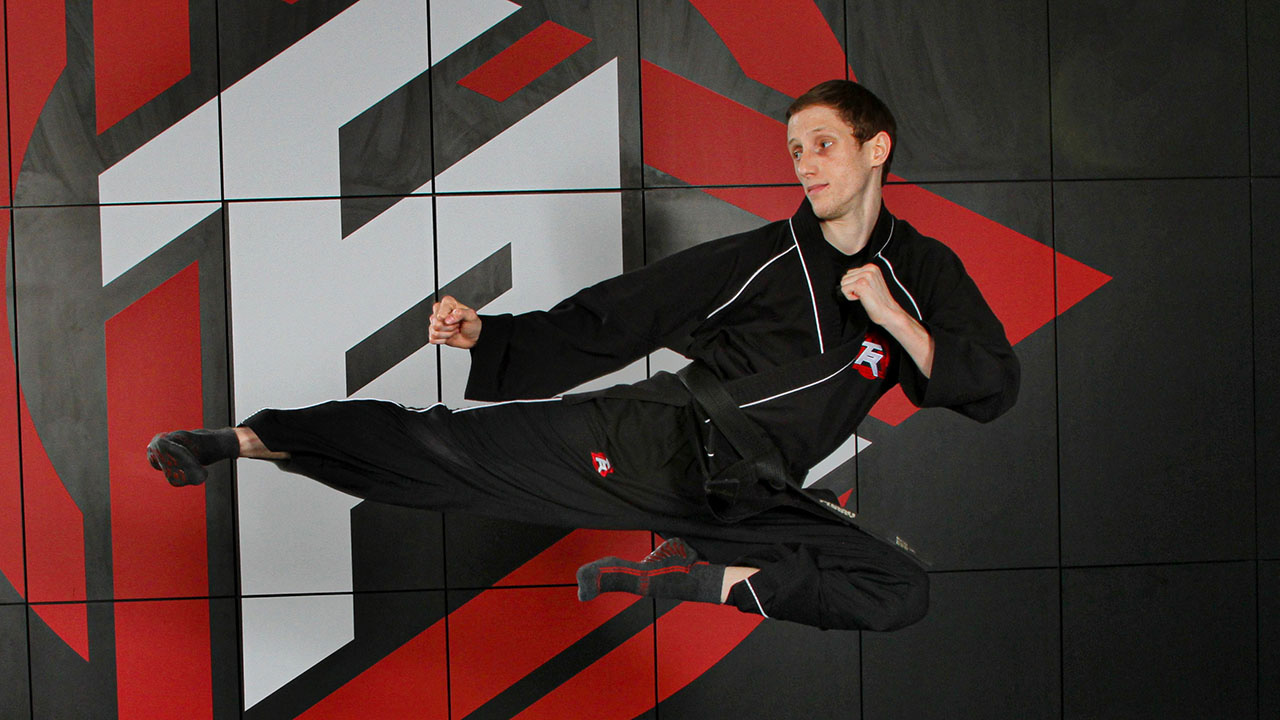We Explain The Difference Between Taekwondo and Karate
Posted on April 1, 2024 by Tiger-Rock Martial Arts

Taekwondo and karate are both martial arts originating from East Asia, but they have distinct differences in terms of techniques, philosophy, and history.
Origins and History:
Karate originated in Okinawa, Japan many centuries ago, and draws influence from indigenous, ancient Japanese martial arts and Chinese martial arts. Various styles of karate have emerged, such as Shotokan, Wado-Ryu, and Goju-Ryu.
Heavily influenced by traditional Korean martial arts, such as Taekkyeon and Subak, as well as by Japanese karate, taekwondo emerged after World War II. Taekwondo was officially established as a martial art in the 1950s and has since evolved into different styles. Tiger-Rock Martial Arts of Tyler teaches a martial arts system that is heavily rooted in taekwondo.
Techniques:
Both martial arts emphasize striking and kicking, but key differences emerge. Karate also emphasizes knee strikes, elbow strikes, and punching. Linear movements and strong stances are a feature of this martial arts.
Taekwondo, on the other hand, is known for its dynamic kicking techniques, including spinning kicks, jumping kicks, and rapid kicking combinations. Taekwondo also incorporates hand strikes and blocks but places greater emphasis on kicks, which are executed with speed and precision. You’ll learn these techniques as you train at Tiger-Rock Martial Arts here in Tyler.
Philosophy and Principles:
Both karate and taekwondo focus on self-discipline, self-defense, and the development of character. Traditional karate practitioners often adhere to principles like humility, respect, and perseverance. However, taekwondo emphasizes the tenets of courtesy, integrity, perseverance, self-control, and indomitable spirit. These tenets of taekwondo are an essential part of the Tiger-Rock philosophy.
Competition and Training:
Karate competitions involve kata (forms) and kumite (sparring). Karate competitions vary in rules depending on the style and organization.
Taekwondo competitions also features sparring (kyorugi), forms (poomsae), and breaking (gyeokpa). Like karate, taekwondo competitions are governed by specific rules set by various organizations. Tiger-Rock, a taekwondo-based system, has its own set of rules that we use in our competitions, but as is everything Tiger-Rock, it is shaped by taekwondo.
Uniform and Ranking Systems:
Both taekwondo and karate have similar uniforms and belt ranking systems. In karate, practitioners typically wear a gi (uniform) with a colored belt system to denote rank. Taekwondo and taekwondo-derived systems like Tiger-Rock also use a colored belt system, but often incorporates uniforms with V-neck tops and pants.
Belt colors usually follow a similar progression, with the colors usually starting from white for beginners and progressing to black for advanced practitioners. Taekwondo and Tiger-Rock, however, will add additional levels at certain ranks.
While both martial arts share some similarities, such as their emphasis on discipline and self-improvement, they also have distinct techniques, histories, and philosophies that set them apart.
Interested in learning more? Tiger-Rock Martial Arts of Tyler is a taekwondo-based martial arts academy located in on Loop 323 near S. Broadway in Tyler. We’re enrolling new students now. Click here to contact us today about our classes.
